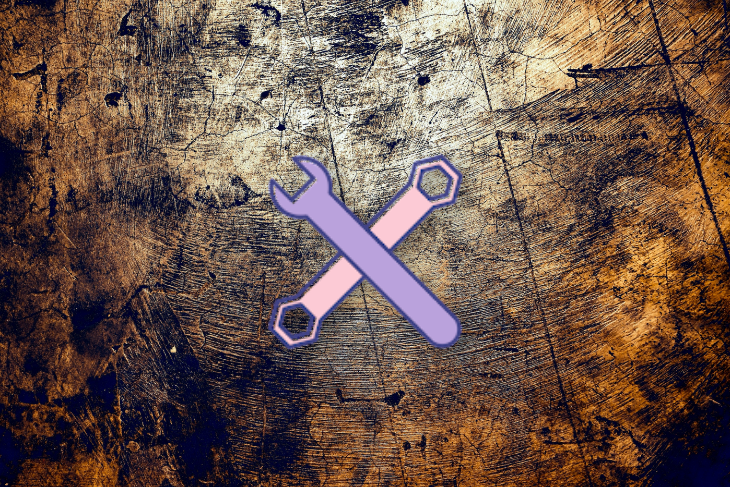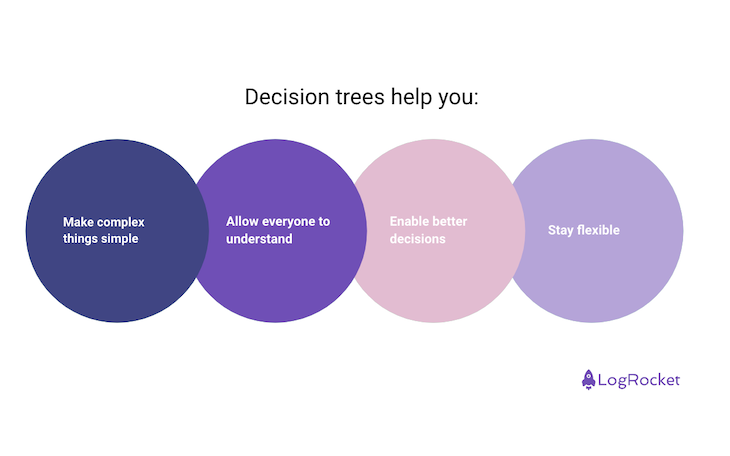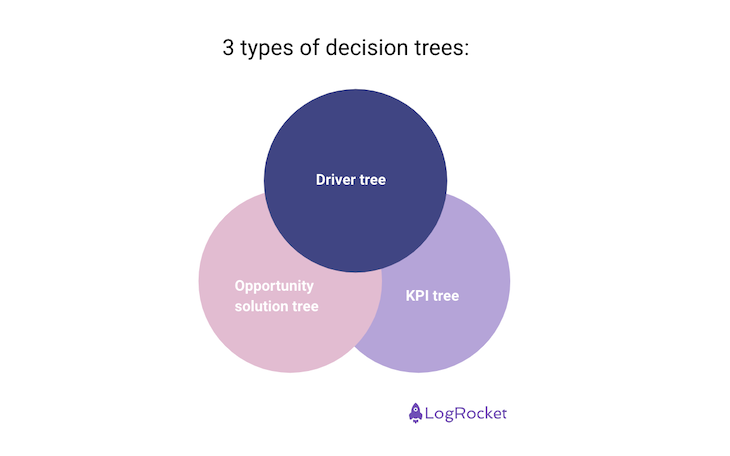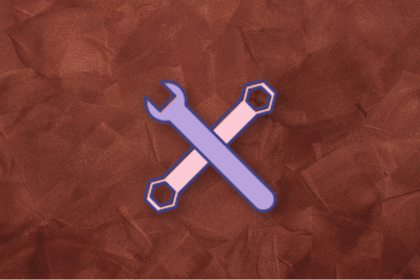A few years ago, I was a product manager at a fast-growing fintech startup. I faced a tough challenge when the leadership team tasked us with cutting a feature’s profit and loss in half in the next three months. The team I inherited had accumulated a lot of technical debt due to the company’s fast growth, which led to the loss of millions of Euros.

The data was unclear and the business environment was complicated. I used a decision tree, specifically a driver tree, to identify where to begin, gain stakeholders’ support, and convince the leadership that we were on the right track.
It’s incredible to see how many decisions product managers have to make on a daily basis. To be able to visualize and communicate these decisions, product managers increasingly leverage different types of decision tree templates. In this article, I’ll explain how useful decision trees can be in product management and how they can help you make better choices when you’re overwhelmed with options.
The simplest version of a decision tree is very similar to a flowchart that can help you make choices. In essence, it can look like a tree where the trunk is the main problem you are trying to solve or the choice you are going to make. As you move up the tree, you define different “tests” that are related to this problem. The tests will lead to other branches and tests, until the final choices.
Let’s look at a simplified example to make this more tangible. Imagine you’re working on a new product initiative and you need to decide if you want to add a specific new feature to the product portfolio.
Your company’s objective is to increase user engagement within the next quarter, so your first test could be something like “Does the feature improve user engagement?” If the answer is “Yes,” you keep digging. If “No”, you have different tests like “Is it still valuable to add the feature later?”
A decision tree template is a helpful tool for making your thoughts visible and externalizing your decision-making process.
As a product manager, decision trees are an essential tool for planning and communicating the direction of your product:

One of the biggest challenges for product managers is the sheer amount of data and feedback they have to go through to make sense of their world. Using decision trees helps to break the complexity down into smaller, more manageable chunks. It helps you to focus on the most important themes and prevents you from getting lost in the details.
Presenting to your team, leadership or your stakeholders becomes way easier if you can easily help everyone see the big picture before zooming in and justifying a potential opportunity.
Answering the question of what to do next and why can be difficult. However, taking the time to think about different possibilities, what could happen if you choose each one, and then selecting the most likely to succeed can save a lot of money and resources.
In the tech world and especially in product management, things change quickly. Yearly roadmaps are not commonly used anymore (at least I hope so). Decision trees are helpful because they can be easily updated or adjusted when new information arises or situations change, which can save you from a lot of headaches.
While decision trees offer many advantages, they come with their own set of challenges. As mentioned before, they can easily be updated, but they don’t auto-adapt to changing circumstances or new information so you need to manually update your trees to keep them relevant.
Another big challenge I see is the potential risk of oversimplifying a complex situation. Breaking down the wider context with lots of variables into a couple of stickies usually means losing a lot of context and information.
Most importantly, decision trees can sometimes reflect the biases of their creators. If there is no solid evidence to support certain decisions, the trees can be misused to promote personal favorites as the best solution, leading others to believe it as well.
Nevertheless, building a tree together with your team can eliminate this bias and support you to get to the best possible outcome. Let’s have a look at how this would look like in a step-by-step guide.
When building your first tree, it can help to follow a methodical approach. As you get more experienced, you can adjust the process to your needs. It’s best to work on the tree with your team to increase the chances of people accepting it.
The most common way of creating a decision tree follows these steps:
After understanding the basic concept behind decision trees, I want to present three more specific trees for product managers. I’ve used all three types in various situations in the last years to better visualize decisions and communicate with stakeholders:

A driver tree breaks down main objectives into multiple drivers that influence them. The challenge is to be as specific as possible on what influences the objective. I’ve used this type of tree for a challenge in my former company.
We aimed to improve our profit and loss when sending physical cards to users. Together with my data analyst I created a driver tree to identify cost drivers. Ultimately, we discovered that the actual problems were different from what was initially proposed from leadership.
As a result, we conducted several A/B tests to gauge the impact of our changes and managed to save millions of Euros for the business in just a few weeks, instead of developing a solution for a problem that did not truly exist.
Opportunity solution trees are created especially for product managers. They mainly focus on growth avenues and their potential impact. Begin by identifying a well-defined problem, then explore various opportunities and sub-opportunities.
Within these opportunities, come up with potential solutions and create specific experiments to test them out. It’s the perfect tree to visualize a roadmap or decide what to do next and link it back to the why. It’s also a great way to communicate better with your team and your stakeholders.
A KPI tree helps you understand how the company’s KPIs influence each other. For example, if increasing “user engagement” is your main goal, this tree dissects what drives it, such as “app performance,” “content quality,” or “user experience.”
In the past, I’ve used these trees to make sure I was tracking the right things within my teams, but also to see if our current work actually had the potential to create impact.
You can use decision trees to get a better picture of the complex world of product and company building. However, you must create and use them carefully, review them often, and always focus on what’s best for the user.
Now that you’ve learned about decision trees, I hope you feel ready to use them in your next tough decision. Don’t be afraid to make your first decision tree and see how helpful it can be.
Featured image source: IconScout
LogRocket identifies friction points in the user experience so you can make informed decisions about product and design changes that must happen to hit your goals.
With LogRocket, you can understand the scope of the issues affecting your product and prioritize the changes that need to be made. LogRocket simplifies workflows by allowing Engineering, Product, UX, and Design teams to work from the same data as you, eliminating any confusion about what needs to be done.
Get your teams on the same page — try LogRocket today.

Trey Courtney talks about his process for evaluating partnerships or acquisitions and how he successfully implements these initiatives.

Asma Syeda shares the importance of responsible AI and best practices for companies to ensure their AI technology remains ethical.

What hard skills do PMs need in 2025? Learn how AI tools can help you level up in SQL, Figma, A/B testing, and more.

Paul Weston talks about “quantifying the unquantifiable,” i.e., bringing in objective data for things that otherwise seem hard to measure.